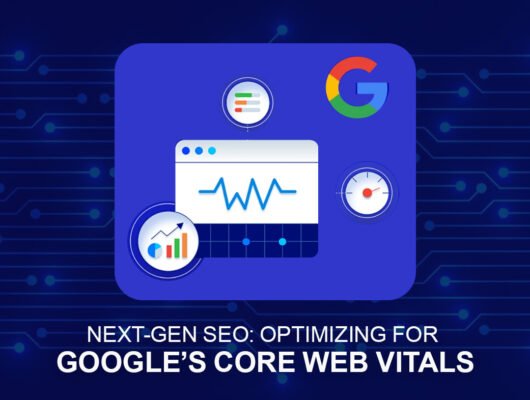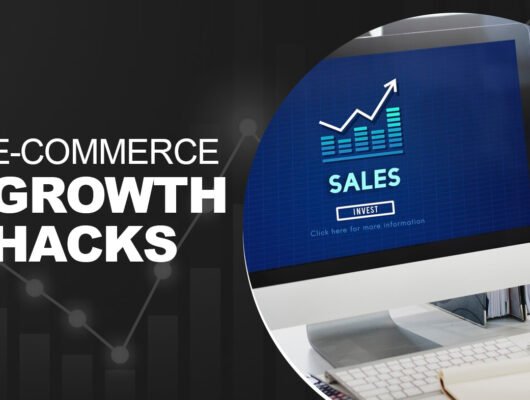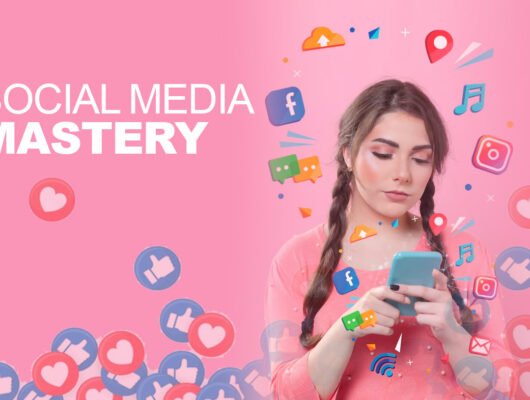Introduction to Influencer Marketing 2.0
Influencer marketing has evolved significantly since its inception, marking a transition from basic endorsements to a more nuanced and impactful approach, now known as Influencer Marketing 2.0. Initially, brands leveraged celebrities and high-profile figures to promote their products primarily through one-way communication channels. However, as digital landscapes transformed and social media platforms gained prevalence, consumer behaviors began to shift. Audiences became more discerning and sought genuine interactions, prompting brands to reassess their strategies.
This evolution has underscored the importance of authenticity in influencer marketing. Modern consumers are more inclined to trust those who share relatable life experiences rather than traditional advertisements. Thus, brands now prioritize collaborations with micro and nano influencers, who often have smaller yet highly engaged followings. These influencers create a more intimate connection with their audience, fostering a sense of community and trust that larger influencers may struggle to achieve. In this context, authenticity becomes a vital currency, as consumers increasingly demand transparency and sincerity from both brands and influencers.
The rise of Influencer Marketing 2.0 also reflects a broader shift toward interactive and engaging content. Brands are now exploring innovative formats such as live streaming, interactive polls, and behind-the-scenes glimpses to enhance connection with their audience. This shift has made influencer partnerships not just a transactional relationship but rather a community-building exercise that resonates with consumers on a human level. The emphasis on authentic engagement signifies a departure from the superficiality of earlier marketing practices, heralding a new chapter that crosses traditional boundaries.
In summary, Influencer Marketing 2.0 stands as a testament to how strategic shifts in influencer engagements can significantly impact brand perception and consumer loyalty. By fostering genuine connections, brands can better align themselves with the values and preferences of today’s empowered consumers, paving the way for sustainable growth and long-term engagement.
The Shift from Celebrity Endorsements to Micro-Influencers
In recent years, influencer marketing has witnessed a significant shift away from traditional celebrity endorsements towards a focus on micro-influencers. This transformation can be attributed to the changing dynamics of consumer behavior, where authenticity and relatability have become paramount. Micro-influencers, typically defined as individuals with a following of 1,000 to 100,000 people, often portray a more genuine connection with their audience compared to their celebrity counterparts.
Research indicates that micro-influencers generally achieve higher engagement rates, often exceeding 7% compared to a mere 1% associated with mainstream celebrities. This enhanced engagement stems from their niche audience, which is more inclined to trust recommendations from someone they perceive as a peer rather than a distant celebrity. A study by Markerly found that influencers with fewer followers could generate 22 times more conversations than those with larger followings. This demonstrates the importance of relatability in marketing, suggesting that consumers are more likely to act on recommendations from micro-influencers.
Case studies further illustrate this trend. For instance, a recent campaign by a skincare brand involving micro-influencers led to a 30% increase in sales, largely attributed to the authentic reviews shared by these influencers across social media platforms. In another example, a fashion retailer engaged several micro-influencers to promote a new collection and saw a 50% increase in website traffic within a month. Such success stories highlight the effectiveness of micro-influencers in driving consumer action through personalized and targeted marketing efforts.
As brands increasingly recognize the advantages of leveraging micro-influencers, this approach is reshaping the influencer marketing landscape. The focus on smaller, more engaged audiences offers an opportunity for brands to foster a deeper connection with consumers while navigating the complexities of modern marketing.
Social Media Platforms Driving the Trend
The emergence of influencer marketing 2.0 owes much to the development of various social media platforms that cater to diverse audiences. Among these, Instagram, TikTok, and YouTube stand out due to their unique capabilities and demographic reach, effectively transforming how brands engage with consumers through authentic content.
Instagram has long been a favorite among influencers, with its visually-driven format allowing for high-quality imagery and storytelling. This platform appeals primarily to younger demographics, particularly millennials and Gen Z, who appreciate aesthetic appeal and personal connection. With features such as Stories, Reels, and Shopping, Instagram has afforded influencers the tools to create engaging content that resonates with their followers while providing brands with seamless advertising opportunities.
TikTok, the relatively new entrant, has quickly gained traction of late for its short-form video content that encourages creativity and spontaneity. Its algorithm promotes content virality, allowing even users with modest followings to achieve significant reach if their content strikes a chord with viewers. TikTok’s audience largely comprises Gen Z, who are drawn to authentic and entertaining brand interactions. This shift towards dynamic video content has prompted influencers to adapt their strategies, ensuring their messaging is both engaging and relatable.
YouTube, a pioneer in the influencer marketing sphere, continues to be a platform where creators can develop deeper connections with their followers through long-form content. Users turn to YouTube for substantial information, tutorials, and entertainment, making it an ideal space for influencer partnerships that facilitate trust and authenticity. The platform attracts a diverse demographic, including older audiences seeking lifestyle, beauty, and tech content. Given its extensive reach, brands leveraging YouTube influencers can maximize visibility and engagement.
In light of these distinctive features and user bases, brands must tailor their influencer strategies according to the platform utilized and its audience’s preferences, thus optimizing their engagement techniques.
The Importance of Authenticity and Genuine Engagement
In the evolving landscape of Influencer Marketing 2.0, authenticity has emerged as a critical factor driving consumer trust and engagement. Today’s consumers are becoming increasingly discerning, often gravitating towards influencers who foster genuine connections and demonstrate transparency. This shift underscores the realization that the perceived authenticity of an influencer can significantly impact a brand’s reputation and effectiveness of its marketing strategies. Authentic influencers resonate more strongly with their audience, leading to higher levels of engagement and conversion rates.
For brands aiming to leverage influencer marketing effectively, understanding this dynamic is vital. Rather than opting for influencers solely based on numerical metrics, it is imperative to evaluate their ability to create authentic content that aligns with the brand’s message and values. An influencer who consistently engages with their audience, shares honest experiences, and cultivates a community of followers invites trust, positioning themselves as a credible source of recommendations. This genuine engagement fosters a sense of belonging among followers, allowing brands to build stronger relationships with potential customers.
Numerous examples illustrate the power of authenticity in influencer marketing. For instance, micro-influencers, who typically have smaller but more engaged audiences, often achieve remarkable success due to their relatable content and personalized interaction. A notable case is of a wellness influencer who shares her personal journey with mental health, encouraging open dialogues about self-care. This approach not only resonates with her followers but also provides brands in the health and wellness sector an opportunity to connect authentically with their target demographic.
By embracing authenticity, brands can create influencer partnerships that yield impactful results. In an era where consumers prioritize genuine connections, brands must adapt by aligning with influencers who share their values and foster authentic engagement to navigate the complexities of this new marketing paradigm successfully.
Leveraging User-Generated Content (UGC)
User-generated content (UGC) has emerged as a significant element within the landscape of influencer marketing, representing a shift towards authenticity and community engagement. UGC refers to any content created by consumers or fans of a brand, including photos, videos, testimonials, and reviews. By incorporating UGC into their influencer marketing strategies, brands can enhance their credibility, as the content reflects genuine customer experiences rather than polished corporate messaging.
One notable example of successful UGC integration is Coca-Cola’s “Share a Coke” campaign. By encouraging consumers to find bottles with their names and share photos on social media, Coca-Cola effectively turned customers into brand advocates. This approach resonated with audiences, facilitating organic engagement across platforms and creating a sense of belonging. Similarly, fashion brand Aerie has leveraged UGC by featuring real customers in their advertising campaigns, embracing body positivity while amplifying customer voices and stories.
To effectively utilize UGC, brands should establish clear guidelines that empower followers to create and share content. This can be achieved through campaigns that encourage customers to use specific hashtags or join challenges that align with the brand’s values. Additionally, recognizing and rewarding contributors by sharing their content on official brand channels fosters a community-oriented environment. It is crucial to create a sense of trust and collaboration, where followers feel their voices matter.
Moreover, brands should actively monitor and engage with UGC, acknowledging and appreciating user contributions. Engaging with followers through comments and shares can strengthen the relationship between the brand and its audience, further solidifying brand loyalty. By harnessing UGC, brands not only gain valuable content but also cultivate a vibrant community that champions authentic engagement, which is paramount in today’s digital landscape.
Data-Driven Insights in Influencer Marketing
In today’s digital landscape, the integration of data analytics into influencer marketing strategies has become pivotal for brands aiming to engage authentically with their target audience. The rise of influencer marketing 2.0 not only emphasizes the importance of genuine connections but also underscores the necessity of leveraging data to inform decision-making processes. This approach allows marketers to assess campaign effectiveness and tailor their strategies accordingly, ensuring optimal outcomes.
Key metrics play a crucial role in evaluating the success of influencer marketing campaigns. Brands typically track metrics such as engagement rates, reach, impressions, and click-through rates. Engagement rates, which measure the level of interaction a post receives, are particularly telling, as they provide insight into how well content resonates with the audience. Additionally, monitoring audience demographics is essential, enabling marketers to select influencers whose followers align with the brand’s target market. This thoughtful analysis not only enhances campaign relevance but also increases the likelihood of fostering authentic engagement.
Moreover, data-driven decision-making empowers brands to identify trends and potential opportunities within their influencer marketing efforts. By analyzing historical data, marketers can uncover which types of content perform best among different demographics, allowing them to create highly targeted campaigns. This approach enhances ad spend efficiency and maximizes return on investment (ROI). In tandem with real-time analytics, brands can adjust their strategies on the fly, ensuring that their campaigns remain agile and responsive to audience feedback.
Overall, the incorporation of data analytics into influencer marketing strategies is instrumental in enhancing authenticity and engagement. As brands increasingly rely on these insights, the landscape of influencer marketing continues to evolve, fostering more personalized and effective interactions between brands and their consumers.
Regulatory and Ethical Considerations
The evolution of influencer marketing has not only amplified its popularity but also drawn the attention of regulatory bodies focused on ensuring ethical practices within this dynamic landscape. As influencer collaborations become more prevalent, the need for clear guidelines regarding disclosure and transparency has intensified. Organizations such as the Federal Trade Commission (FTC) in the United States have taken significant steps to mandate that influencers disclose any material connections with brands, whether through sponsorship or compensation. Such disclosure is crucial for maintaining the integrity of influencer marketing, as it upholds consumer trust and facilitates informed decision-making.
Ethical considerations in influencer marketing involve more than just compliance with regulations; they extend to the authenticity and credibility of endorsements. Influencers are expected to represent products and brands genuinely, as misleading or inauthentic promotions can damage both their reputation and that of the associated brands. This raises an important point: not only should influencers disclose their partnerships, but they should also engage with brands whose values align with their personal brand. This synergy can foster a more meaningful connection with the audience and enhance overall brand perception.
Brands engaging in influencer marketing must prioritize transparency to cultivate trust with their readership. Best practices for navigating this regulatory environment include crafting clear contracts that outline disclosure requirements, providing influencers with adequate training regarding compliance, and proactively monitoring content for adherence to established guidelines. Furthermore, embracing transparency by openly communicating brand values and commitment to ethical practices can significantly enhance a brand’s reputation in the eyes of consumers. As the industry evolves, adhering to regulatory frameworks while fostering authentic relationships will be vital for sustained success in influencer marketing. In conclusion, navigating the regulatory and ethical dimensions of influencer marketing is imperative for maintaining audience trust and fostering genuine engagement.
Future Trends in Influencer Marketing
The landscape of influencer marketing is continuously evolving, driven by advancements in technology and shifts in consumer behavior. As we look toward the future, several key trends are poised to shape the industry significantly. One of the most prominent developments includes the integration of artificial intelligence (AI) in analytics. AI-driven tools can now analyze vast amounts of data, offering brands deeper insights into audience demographics, engagement metrics, and content performance. This allows for more targeted influencer partnerships, ensuring brands can align themselves with influencers who genuinely resonate with their desired consumer base.
Another emerging trend is the rise of virtual influencers, digital personas created by brands or agencies that function akin to traditional influencers. This approach allows brands to maintain greater control over the messaging and image, ultimately fostering a carefully curated persona that can engage audiences in unique ways. As virtual influencers gain traction, it is expected that brands will gradually integrate them into their influencer marketing strategies, particularly for campaigns that require a high level of brand consistency and message alignment.
Shifts in consumer behavior also play a critical role in shaping the future of influencer marketing. Today’s consumers are increasingly valuing authenticity and transparency, leading marketers to focus on building genuine relationships and trust with their audiences. This trend may result in the rise of micro and nano influencers, who often enjoy higher engagement rates and a dedicated following. Brands are likely to prioritize these smaller influencers as they provide a more personal touch and foster deeper connections within niche communities.
Industry experts predict that influencer marketing will continue to adapt to changes in social media algorithms, platform preferences, and consumer expectations. As these dynamics unfold, marketers will need to remain agile, continuously refining their strategies to leverage emerging technologies and consumer insights for authentic engagement.
Conclusion: Preparing for Influencer Marketing 2.0
As the landscape of influencer marketing evolves, brands must adapt their strategies to remain relevant and successful. The emergence of Influencer Marketing 2.0 marks a shift towards authenticity and deeper engagement, moving away from traditional approaches that prioritized reach over meaningful connections. This new era underscores the importance of aligning with influencers who resonate genuinely with audiences, ensuring that collaborations feel organic rather than scripted.
In this evolving environment, leveraging data analytics becomes essential for brands to identify suitable influencers. By focusing on metrics such as engagement rates, audience demographics, and content alignment, marketers can develop informed strategies that create lasting relationships with consumers. Understanding the preferences and values of target demographics enhances the effectiveness of influencer partnerships, fostering greater trust and interaction with the brand.
Moreover, embracing innovative strategies will allow brands to leverage the full potential of influencer marketing. This includes experimenting with various content formats, exploring new platforms, and engaging in joint ventures or co-creating products with influencers. Such collaborative efforts not only increase visibility but also enrich the consumer experience by providing added value. Brands should also remain vigilant of shifting trends and changing audience expectations, adjusting their tactics accordingly to maintain relevance.
Looking ahead, the emphasis on authenticity and engagement in Influencer Marketing 2.0 will be crucial for success. Brands that prioritize ethical partnerships, transparency, and community engagement are more likely to foster loyalty and long-term relationships with customers. By reshaping their approach and welcoming the evolution of influencer marketing, businesses can thrive in this new era and unlock the immense potential that lies within authentic influencer collaborations.







